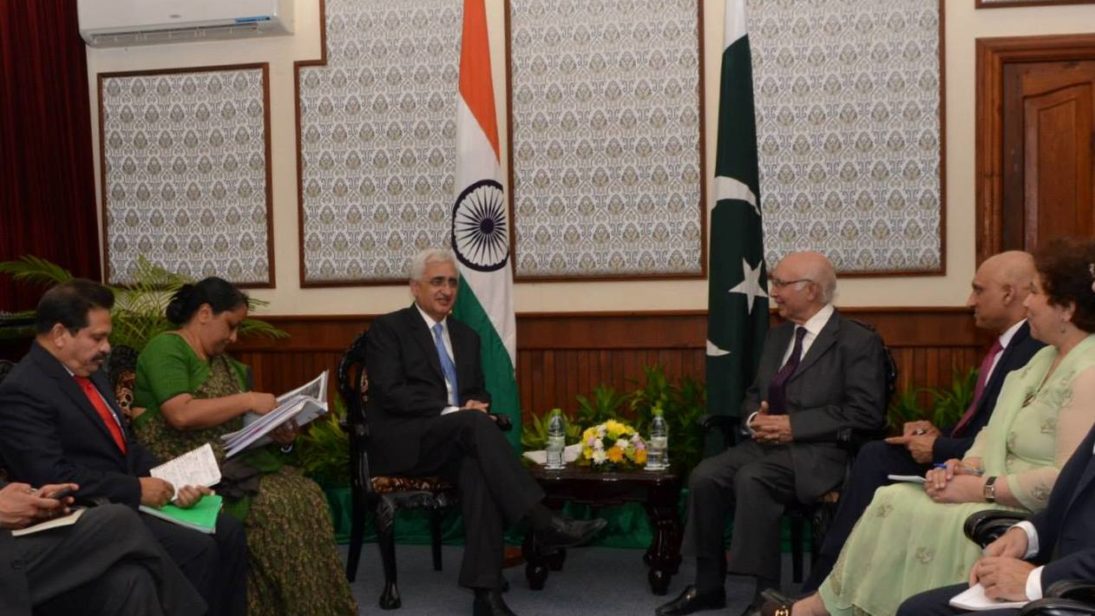
Realism’s materialistic approach has made a resurgence and become the dominant theory to explain international relations. The concepts of power, self-interest, and statism have become prevalent in academia. The anarchic or somewhat unchecked state of international affairs does depict some of the tenets of realism, but materialism is not the sole explanation for contemporary world politics. Constructivism provides an alternative theory to examine international affairs. First coined by Nicholas Onuf in 1989, constructivism received recognition after the work of Alexander Wendt in 1992 and Peter J. Katzenstein in 1996.
Constructivists believe that international relations are socially constructed, and therefore determined by constantly evolving beliefs, ideas, and norms of state actors. They disagree with realism’s insistence that material forces or innate nature alone drive international relations.
To prove the importance of non-material forces in international relations, Wendt provides the example of the difference in the United States’ perception of the UK and North Korea’s nuclear arsenals. Although both countries have nuclear weapons, the United States is much more threatened by North Korea because of their hostile relationship. The difference in the United States’ reaction demonstrates the importance of non-material factors in driving international relations.
The constructivist approach can also be applied to the two arch rivals in South Asia.
Pakistan-India: Hostile since Inception
The relationship between India and Pakistan is often studied through the lens of Realism. Multiple wars, countless border clashes, and an almost constant state of hostility depict the nature of their relationship. Political elites on both sides are turning to realism to discuss and implement policies influenced by realism.
An examination of the historical relationship between Pakistan and India shows that the enmity is not just because of material objects (such as territorial disputes or nuclear weapons), but is rather explained by deeply-rooted differences in beliefs, ideas, and norms. Examples of these non-material divides include the pre-partition Urdu-Hindi language controversy, Muslims and Hindus’ conflicting views on cow slaughter, or the violence during the Indo-Pakistani War of 1947.
Understanding these non-material and often historic factors driving the India-Pakistan relationship is important, even if material factors have some influence in the relationship. The hostility that exists at the military and political levels has been discussed at length, but the hostility at the social and grassroots levels is largely being ignored. In the contemporary world, people-to-people contact is inseparable from regional and global politics; but in the case of Pakistan-India relations, this aspect is often ignored.
Although cultural differences between India and Pakistan are deeply rooted, there are a number of common threads to help bridge the gap, including sharing a common social structure, culture, and norms for thousands of years. In addition, adopting policies like Track II and Track IV diplomacy can help bring people closer. The biggest barrier to furthering relations is a lack of trust. Current campaigns to improve relations at the grassroots level have been unsuccessful so far, but show promise.
Another barrier to improving relations is extremism. Extremism and incidents like the 2008 Mumbai attacks and the Samjhota Express bombings detract from efforts to improve relations. Indian extremists find it hard to accept Pakistan as an independent nation. In Pakistan, radicals use issues like Kashmir and the Gujarat Massacre as trump cards to prevent progress.
Recommendations
- Track II and Track IV diplomacy need to be utilized more effectively. These tools should be expanded and used into the small cities of both states.
- The media, with its cross-border access, should promote positive – instead of hate speech.
- People-to-people contact must be enhanced through cultural, educational, and civil society delegations on regular basis.
- Propagation of mutual social norms, ideas and ideals must be adopted for improving relations at the grassroots level.
Conclusion
Constructivism may not be the central approach to explain Pakistan-India relations, but it certainly has the capability to explain and establish close ties, especially at social level. In spite of political and military clashes, people-to-people relations can be improved through the building of mutual beliefs, ideas, and norms. This will not only be good for people-to-people relations, but will also pave the way for a stable South Asian region.
***
Image: Indian Ministry of External Affairs, Flickr


